 Most viewed - SHIGA 滋賀県 Most viewed - SHIGA 滋賀県 |
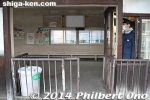
Old Hikoneguchi Station turnstile.122 views
|
|
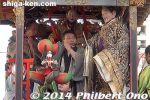
Seiobo is the Chinese goddess Xi Wangmu living on the mythological Kunlun Mountain. She danced for Emperor Wu of Han who desired longevity. She gave him a longevity peach.122 views
|
|
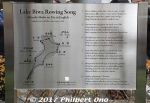
Monument's English side has a bilingual Lake Biwa map and Lake Biwa Rowing Song English lyrics.122 viewsDirections: From JR Kyoto Station's Karasuma side (north side with Kyoto Tower), go to bus stop D2 and catch the No. 206 bus bound for "Gion Via Kiyomizu-dera Temple/Kitaoji Station" (三十三間堂・清水寺・祇園・百万遍). The bus leaves every 15 min. or so (bus schedule here), but it can be very crowded. The ride takes abut 30 min. Get off at "Kyodai Seimon-mae" (京大正門前). Cross the big road (Higashi-Oji-dori) and walk along Higashi-Ichijo street. The main Yoshida Campus will be on the left while the Yoshida-Minami Campus will be on the right. Enter the Yoshida-Minami Campus and walk to the central courtyard area.
(From Kyoto Station, there is also an express bus (京大快速) to Kyoto University Hospital from bus stop D3, but it runs only at certain times on weekdays, mainly in the morning and mid-afternoon (bus schedule here).
|
|

Maruko-bune wooden boat which was a common sight on Lake Biwa in the old days before trains came to fore. Near this area was a major maruko-bune port called Oura.121 views
|
|

Shopping arcade on the west side of Omi-Imazu Station121 views
|
|

Omi-Hachiman Station121 views
|
|

Niomon Gate121 views
|
|

Halfway point and rest stop121 views
|
|

Hondo 本堂121 views
|
|
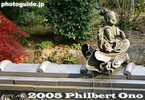
Roof ornament121 views
|
|

121 views
|
|

Site of Kojima Honjin and Emperor Meiji marker. The Kojima Honjin was Ishibe-juku's best accommodation suited for feudal lords and emperors.121 views
|
|

Kusatsu history121 viewsBeing a stage town along the Tokaido Road connecting Edo (Tokyo) and Kyoto, Kusatsu had over 70 inns for travelers. The best inn was the Honjin, reserved for daimyo warlords, Imperial family members, etc.
|
|

Kusatsu-juku Honjin corridor. Pass by numerous Japanese-style rooms. 畳廊下121 views畳廊下
|
|

Ukiyoe prints of Kusatsu-juku at Kusatsu-juku Kaido Koryu-kan 草津街道交流館121 views
|
|

Naihaiden Hall (Inner Haiden 内拝殿)121 views
|
|

Gate to Gichuji. MAP121 views
|
|

Perfumed water?121 views
|
|

Horse feed, mainly grain. No meats.121 views
|
|

Shopkeeper's record book.121 views
|
|

Showcase121 views
|
|

Rickshaws121 views
|
|

Inside the home of Omi merchant Nakae Jungoro (中江 準五郎邸).121 views
|
|

Omi Obata Deko dolls121 views
|
|

On the other side of this Anegawa River were Oda Nobunaga's forces.121 views
|
|

121 views
|
|
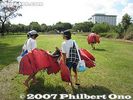
Almost 50 members in the club, and almost all of them participated in this rowing trip. Some of them did this for the third time. Photo: Carrying life vests. All rowers are required to wear life vests.121 views
|
|
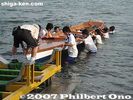
The boat is first carried onto a trolley.121 views
|
|
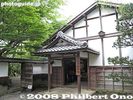
Naosuke bided his time studying and practicing the tea ceremony, flower arrangement, Zen, poetry, martial arts, and other arts.121 views
|
|

In the background is cloud-capped Mt. Mikami.121 views
|
|

121 views
|
|

This road near the primary school is dubbed "Road for Greetings" (Aisatsu no Doro). I walked on this road and passed by a few kids, but received no hellos from them...121 views
|
|

About 46 mascots showed up during the two days. I went on the first day. They are called "yuru-kyara" (ゆるキャラ) in Japanese which means "loose characters." (Don't ask me what that means.)121 views
|
|

Yaoi-chan from a shopping arcade in Kita-ku, Kyoto. やおいちゃん(京都 京都市北区 御薗橋801商店街)121 views
|
|

Wataru from Kobe, Hyogo promotes the three bridges crossing from Honshu to Shikoku. (Notice the car on the head.) I thought it was a piece of toast walking around. わたる (兵庫 神戸市)121 views
|
|

Kumokkuru was created by a flower project group in Shibuya, Tokyo. I thought it was a baby monster from a Godzilla movie. くもっくる (東京 渋谷)121 views
|
|

Gate to the sumo arena. The gate opened at 8 am. The last exhibition sumo tournament held in Shiga was in 1999 in Nagahama Dome.121 views
|
|

Boxing121 views
|
|

Ama is the winner. In Nov. 2008, he was promoted to Ozeki and was renamed Harumafuji.121 views
|
|

Parading on Chuo Odori road. 121 views
|
|

After the lunch break, the floats geared up to move on. This is the Genji-yama float with banners declaring the Millennium anniversary of Tale of Genji.121 views
|
|

121 views
|
|

121 views
|
|

Lakefront121 views
|
|

No nails121 views
|
|

Moat as seen from Kuromon Gate.121 views
|
|

Sign explaining about Hayasaki (Hayazaki) Naiko Biotope. It was an attached lake to Lake Biwa until it was filled in as reclaimed land in 1970.121 views
|
|

121 views
|
|

121 views
|
|

121 views
|
|

121 views
|
|

121 views
|
|

121 views
|
|

The first break was at the Ichiba Kumin Hiroba square.(市場区民広場)121 views
|
|

121 views
|
|

121 views
|
|

Family portrait with the chigo child.121 views
|
|

Interesting to see Buddhist priests chanting Buddhist sutras in front of a Shinto shrine.121 views
|
|

121 views
|
|

Marker indicating a boat landing at this street corner across from the shrine.121 views
|
|

Established in the 8th century and one of the Konan Sanzan Trio of Tendai Buddhist National Treasure temples in Konan, Zensuiji's main Hondo Hall is a National Treasure. It is on the slope of Mt. Iwane.121 viewsZensuiji means "Efficacious Water Temple." From JR Kosei Station on the JR Kusatsu Line, catch a bus and get off at Iwane 岩根. From there, you still have to walk a bit, follow the signs (if you can read Japanese). This road leads to one entrance to Zensuiji.
|
|
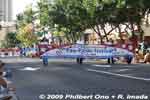
The 30th Pan-Pacific Festival (also called “Matsuri in Hawaii”) parade on June 7, 2009 from 5 pm to 7 pm along Kalakaua Ave. in Waikiki. Photos were taken by my friend in Hawaii, Randall Imada.121 views
|
|

Near the statue, Hana no Shogai (Flowering Life 花の生涯) monument for Funahashi Seiichi's novel about Naosuke's life that was made into the first NHK Taiga Drama.121 views
|
|

A few cherry trees along the way to Kaizu-Osaki.121 views
|
|

121 views
|
|

121 views
|
|

121 views
|
|

121 views
|
|

121 views
|
|

This hikiyama is shaped like a boat.121 views
|
|

121 views
|
|

121 views
|
|

121 views
|
|

121 views
|
|

121 views
|
|

121 views
|
|
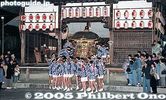
At around 9 pm when the day's final kabuki performance ends, they take out the mikoshi and parade it around the Otabisho before they carry it back to Nagahama Hachimangu Shrine.121 views
|
|
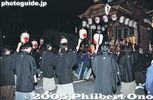
The festival on April 15 lasts well after dark. The day's final kabuki performance starts at around 8 pm at the Otabisho.121 views
|
|

121 views
|
|

121 views
|
|

Tiny fish form the pine tree design on the fans.121 views
|
|

Hanafuda playing cards.121 views
|
|

121 views
|
|

Floats go through the torii and head for Himure Hachimangu Shrine.121 views
|
|

121 views
|
|

121 views
|
|

121 views
|
|
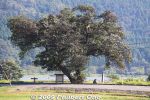
Swan maiden tree at Lake Yogo. It's actually not that close to the lake edge. It's a willow tree. (マルバヤナギ) 余呉湖の衣掛柳121 views
|
|

Replica of Japan's largest dotaku found in Yasu.121 views
|
|

121 views
|
|

Otsu Port for Michigan. These photos were taken in Aug. 2010 and earlier years. You can see how the boat's trimmings look different.121 views
|
|

The shuttle bus leaves once or twice an hour from Nagahama Castle. It comes with a bus guide. 121 views
|
|

About the Ochaya in Japanese.121 views
|
|
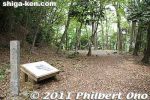
Marker for the Akao Yashiki residence. The Akao family was one of the Azai's important samurai retainers. The proximity of the residence to the Honmaru is indicative of this.121 views
|
|

121 views
|
|
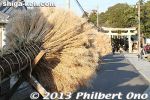
A total of 12 giant torches would be lit up for the festival. In the old days, they had more torches, but the number has decreased due to the difficulty of procuring materials.121 views
|
|
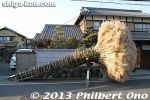
121 views
|
|
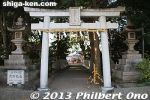
Katsube Shrine torii.121 views
|
|

Inside Kaikoku Kinenkan museum.121 views
|
|

Hikoneguchi Station on the Ohmi Railways first opened in 1901 and renamed Hikoneguchi in 1917. This station building was torn down in Aug. 2014. 彦根口121 views
|
|
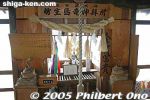
Altar for the Chikubushima Dragon God.121 views
|
|

Another room in Choshoan.121 views
|
|

Shiga Prefectural Azuchi Castle Archaelogical Museum. MAP120 views
|
|

Stone lantern sculpture120 views
|
|

Water fountain120 views
|
|

3-story pagoda 三重塔120 viewsImportant Cultural Property
|
|

護摩堂120 views
|
|

Chomeiji pier120 views
|
|

Shrine next to temple120 views
|
|

"Yoisho!" (Heave ho!)120 views
|
|

The boat is deluged with large swells spilling into the boat. 大波120 views
|
|

The boats are stored outside since there is no room inside the boathouse which stores the most expensive boats.120 views
|
|

Tree120 views
|
|

Entrance to Ishida Shrine 石田神社 供養塔120 views
|
|

24-hour strict security in place. Since 1969, the government-run Japan Racing Association (JRA) has trained jockeys and race horses in Ritto. It offers free tours of this large, impressive facility on Sunday afternoons and early Wednesday mornings.120 views
|
|

No need to say giddy-up.120 views
|
|

120 views
|
|

Bonsai120 views
|
|

120 views
|
|

German-made accordian used by Yoshida Chiaki was also on display.120 views
|
|

In the end, we all sang the song, including the mayor of Takashima.120 views
|
|

Jamie sang by herself (without twin sister Megan), however, we provided piano music which included only Megan's voice. So it sounded like both sisters were singing. First time we did that.120 views
|
|

Stairs from Yoshida Chiaki's room on the 2nd floor.120 views
|
|

So here's the handkerchief (1200 yen). It's very thin cotton. 近江正藍染 <県知事指定・滋賀県伝統的工芸>120 views
|
|

Lookout point on Mt. Mikami in Yasu.120 views
|
|

120 views
|
|

Temari decoration on bridge.120 views
|
|

Kaio vs. Kotooshu120 views
|
|

This house in Kajiya-cho was open to the public to exhibit stuff related to the lead float Saigyo Sakura Tanuki-yama.120 views
|
|

120 views
|
|

120 views
|
|

120 views
|
|

Nishinomaru Sanju-yagura turret. This turret is usually closed to the public, but opened during the 400th anniversary in 2007.120 views
|
|

Ii Naosuke (井伊 直弼) (1815-1860) was the Tokugawa shogunate's Chief Minister (Tairo) who favored and concluded commercial treaties with the Western powers and thus broke Japan's isolation from the world.120 views
|
|

Ichiba Kumin Hiroba square.(市場区民広場)120 views
|
|

They danced to recorded music.120 views
|
|

Another stop was made at the Maeno Community West Hiroba Square (前野集会所西広場) in front of Chianji (Chianzenji) Temple (地安禅寺).120 views
|
|

Route to the Tarumi Tongu palace site.120 views
|
|

120 views
|
|

120 views
|
|

April 13 climaxes in the evening with the Yomiya Otoshi Ceremony starting with a torch procession around the streets near Hiyoshi Taisha from 6 pm.120 views
|
|

Yomiya-jo120 views
|
|

More bowing between priests.120 views
|
|

They are called the Kamogawa 48 Stone Buddhas. They were originally made in 1553 by Sasaki Rokkaku Yoshikata (佐々木六角 義賢), lord of Kannonji Castle in Azuchi in memory of his deceased mother.120 views
|
|

Unoke is the former home of the late Prime Minister Uno Sosuke. Now owned by the city, it has been renovated as an exhibition space and restaurant/cafe.120 views
|
|

Hikiyama Festival Plaza in front of Minakuchi Jonan Station.120 views
|
|

Hiyoshi Taisha's tea field, Japan's oldest.120 viewsDuring the latter half of November, Hiyoshi Taisha has 3,000 maple trees lit up at night 5:00 pm–8:30 pm. Even the green leaves look great against the dark sky. Info in Japanese:
http://hiyoshitaisha.jp/event/momiji/
|
|

It is actually a boat dock on Lake Biwa.120 views
|
|

Kaizu-Osaki cherry blossoms, one of Japan's 100 Best Spots for cherry blossoms.120 views
|
|

120 views
|
|

Nagahama hikiyama floats at the Otabisho. The building on the right houses the mikoshi portable shrine.120 views
|
|
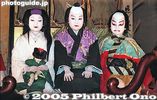
120 views
|
|

120 views
|
|

120 views
|
|

120 views
|
|

120 views
|
|

120 views
|
|

120 views
|
|

120 views
|
|

120 views
|
|
|
|
|

Many homes hang red streamers during the Sagicho Festival.120 views
|
|

The following photos were taken on the second day of the festival. On the festival's 2nd day (Sun.), the floats are paraded from 10:30 am and arrive at the shrine by 2 pm.120 views
|
|

Children's floats go to battle.120 views
|
|

This float won 2nd place.120 views
|
|

120 views
|
|

Here we go...120 views
|
|

Children's float from Shinmachi-dori120 views
|
|

The two children's floats separate.120 views
|
|

After a loud dragging noise, they clash and lock their antlers.120 views
|
|

And in the right corner is Uwai-cho, ready to rumble. 魚屋町120 views
|
|

120 views
|
|

120 views
|
|
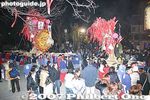
More floats return to the shrine to be burned.120 views
|
|

At 8 pm, five floats are set on fire at one time by a torch such as this one.120 views
|
|

Josh Bostic120 views
|
|
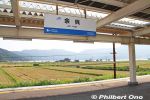
JR Yogo Station platform with Lake Yogo in the background. In Sept. after the rice was harvested.120 views
|
|

Final score: Apache 68 and Lakestars 78. The Lakestars also beat the Apache again the next day.120 views
|
|

My YouTube video of the Hinade Shrine Sumo Odori Dance.120 viewsMt. Hinodeyama with Hinode Jinja Shrine holds an annual sumo festival on the third Mon. of Sept. It features mainly children's sumo and a sumo jinku dance by about 16 men. Near JR Sakata Station (Hokuriku Line).
|
|
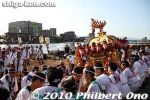
Hauling the main mikoshi onto the boat.120 views
|
|
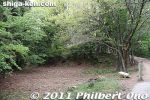
After a short walk was the Bansho guard house site here. 番所120 views
|
|
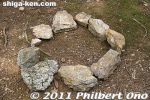
Circle of rocks in Sannomaru. Not sure what it means.120 views
|
|
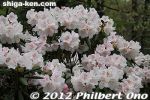
120 views
|
|

120 views
|
|
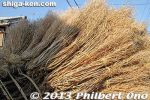
Some 400 bundles of rapeseed hulls are used for the 12 torch heads. The torch head smells like tatami mat.120 views
|
|
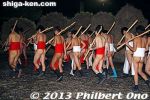
They all carry a shushi stick imprinted with "Prayer for family safety and health" (奉納勝部神社 家内安全 かない あんぜん).120 views
|
|
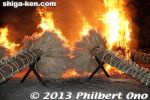
120 views
|
|
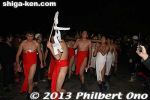
120 views
|
|
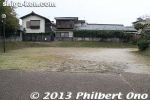
National Historic Site of Omi-Otsu Palace building in Nishikori. Thirteen large pillar holes of a long building was first discovered here in 1974. Otsu was Japan's capital for only 5 years from 667. 近江大津宮120 views
|
|

Boats also leave from Nagahama and Hikone for Kaizu-Osaki.120 views
|
|

The woman might even bring a prop like a red umbrella. Nagahama, Shiga.120 views
|
|

Castle model119 viewsIn the Azuchi Castle Museum (Azuchi Jokaku Shiryokan)
安土城郭資料館
|
|

Statue of Sakuro Tanabe, the canal engineer119 viewsIn the park near top of Keage Incline. The canal is lined with various monuments and writings, especially on the canal tunnel entrances.
|
|

Shrine grounds where the taiko drum dance is performed119 views
|
|

119 views
|
|

Inside 3-story pagoda119 views
|
|

三仏堂119 views
|
|

Giant rock119 views
|
|

大権現社119 views
|
|

Photo op room at Kusatsu-juku Kaido Koryu-kan. You can dress up as a traveler on the Tokaido/Nakasendo Road and take a picture of yourself. You can even sit in the palanquin. A tripod is provided too. 草津街道交流館119 views
|
|

Lake Biwa119 views
|
|
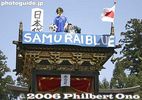
World Cup soccer 南大窪町の「南壮社(なんそうしゃ)」119 views
|
|

Omi-Fuji (Mt. Mikami) and Karasuma Peninsula. 近江富士(三上山)と烏丸半島119 views
|
|
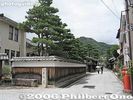
Shinmachi-dori next to Local Artifacts Museum119 views
|
|
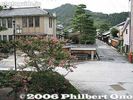
119 views
|
|

Canal119 views
|
|

Legend of Seta Karahashi Bridge about Fujiwara Hidesato who killed the giant centipede on Mt. Mikami.119 views
|
|

Monument marking Ishida Mitsunari's former residence.119 views
|
|

View of track from press room.119 views
|
|
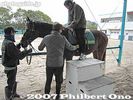
Horse ride.119 views
|
|

Shopkeeper's record book.119 views
|
|

Attic and ceiling119 views
|
|
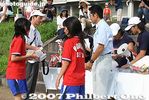
The junior category team receive their medals and CDs.119 views
|
|

A sign in front of the storehouse introduces the float in Japanese, English, and Korean.119 views
|
|

After passing through a bamboo grove, there is a clearing with the Tempo Gimin Monument.119 views
|
|

119 views
|
|

A local troupe of Taiko drummers called "Mukade Taiko." Mukade means centipede. Mt. Mikami is famous for a folk tale about a giant centipede which occupied the mountain. It was later killed by a brave warrior from Otsu.119 views
|
|

At around 1 pm, the Ring-entering ceremony by Juryo wrestlers on the east side. 十両土俵入り119 views
|
|

Now the Yokozuna dohyo-iri ring-entering ceremony.119 views
|
|

Karakuri dolls from the Kakkyo-yama float.119 views
|
|

A small parade comes thrpugh.119 views
|
|

119 views
|
|

119 views
|
|

119 views
|
|

Behind the castle tower is Nishinomaru keep which is west of the castle tower.119 views
|
|

They first introduced all the people in the Saio Princess Procession.119 views
|
|

119 views
|
|

The Saio princess was poised as always, despite the winds and sun and the heavy costume.119 views
|
|

The Dochumai was performed. 道中舞119 views
|
|

119 views
|
|

The Saio Gunko procession proceeds through tea fields on the way to Tarumi Tongu.119 views
|
|

Flower Procession. They walk slowly and deliberately with parents and relatives in tow. 花渡り式119 views
|
|

Some kids get tried and end up being carried.119 views
|
|

The fun is not over until they start to carry the mikoshi out of the Yomiya-jo. They run with the mikoshi and make it very dramatic (and dangerous if you're in their way).119 views
|
|

The Tendai Abbot chants a sutra in front of the Honden at Nishi Hongu. 読経119 views
|
|

Omizo Castle in Takashima was originally built by Oda Nobuzumi in 1578, a nephew of Oda Nobunaga. It was built to oversee transportation on Lake Biwa along with Azuchi, Nagahama, and Sakamoto Castles on the shores of Lake Biwa.119 views
|
|

Biwako Ohashi Bridge as seen from Mt. Hiei.119 views
|
|

JR Mikumo Station on the Kusatsu Line.119 views
|
|
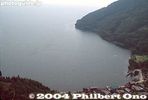
119 views
|
|

The entrance pathway has picture panels explaining about the famous founders of Japanese Buddhist sects.119 views
|
|

Statue of Nichiren at Joko-in temple.119 views
|
|

Each of the hikiyama floats are named after their respective neighborhoods.119 views
|
|

Wedded trees at Hieda Shrine119 views
|
|

Jizo 早尾地蔵尊119 views
|
|

Monkey sculpture on all four corners of the Romon Gate at Nishi Hongu.119 views
|
|

119 views
|
|

Sacred Monkey cage on left and Sacred Horse on the right (dummy horse).119 views
|
|
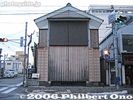
Hikiyama float storehouse.119 views
|
|

119 views
|
|

119 views
|
|

If you missed the performance at the shrine, you can see the same performance later in the shopping arcade or at the Otabisho.119 views
|
|
| 18510 files on 74 page(s) |
 |
 |
18 |  |
 |
|